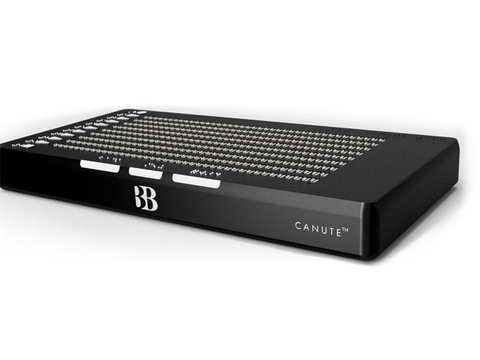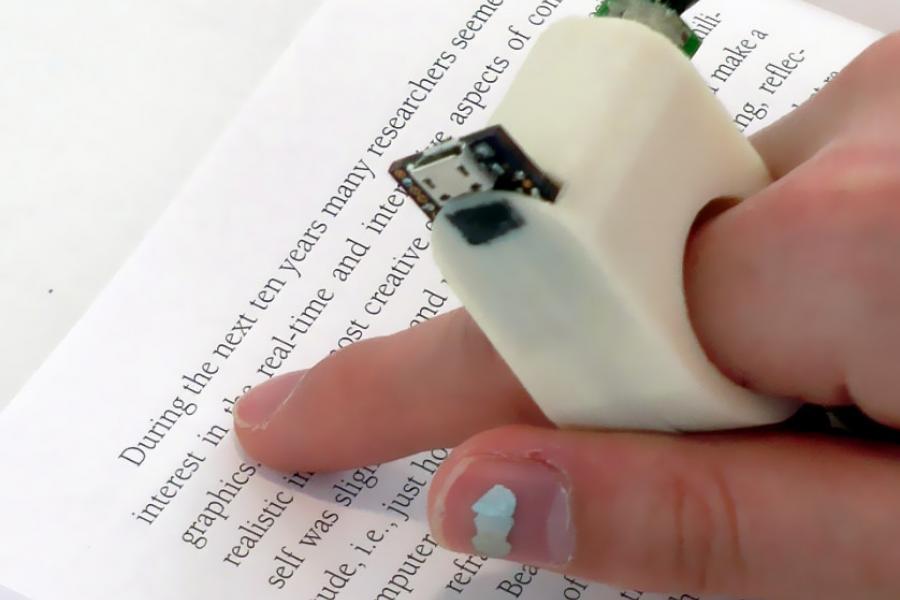Speech-to-Text Devices for Low Vision: Narrowing the Communication Gap
Speech-to-Text Devices for Low Vision: Narrowing the Communication Gap
Blog Article
Discover Innovative Tools Developed for the Aesthetically Impaired
The development of innovative devices for the visually damaged represents a significant development in access and self-reliance. Technologies such as wise glasses with AI capacities and mobile applications created to provide auditory descriptions are improving everyday experiences for customers.
Smart Glasses for Navigation

Smart glasses designed for navigating are changing the method visually damaged people engage with their environment. These advanced tools make use of a mix of cam innovation, fabricated knowledge, and auditory feedback to give real-time details regarding environments. By employing obstacle discovery systems, wise glasses can alert customers to potential dangers, making it possible for safer mobility in both familiar and strange setups.
The integration of GPS modern technology additionally enhances navigating capabilities, permitting users to receive acoustic directions as they move. This hands-free technique not only promotes self-reliance but also equips visually impaired individuals to browse metropolitan landscapes with enhanced self-confidence. Furthermore, several smart glasses are equipped with features that identify landmarks and street indications, supplying contextual details that boosts the customer experience.
Additionally, the growth of these gadgets is continually advancing, with firms functioning to boost the accuracy of things recognition and expand the variety of navigational attributes. As smart glasses end up being more economical and obtainable, they hold the potential to considerably change day-to-day live for aesthetically damaged users. Ultimately, these innovative devices represent a critical step toward inclusivity, offering boosted flexibility and a better feeling of autonomy for individuals navigating the world around them.

Mobile Application for Daily Living
Just how can mobile applications enhance the lives of aesthetically impaired people? Mobile apps are changing the means aesthetically damaged individuals browse their settings, manage everyday tasks, and gain access to info. These applications offer crucial support with numerous performances, cultivating independence and boosting lifestyle.
Several innovative mobile applications are designed especially for daily living. Apps like Be My Eyes attach aesthetically damaged users with sighted volunteers via video phone calls, enabling them to obtain real-time aid with tasks such as checking out labels or navigating unfamiliar areas. Seeing AI, created by Microsoft, utilizes man-made intelligence to define environments, reviewed text, and recognize objects, successfully changing a mobile phone into a powerful device for daily assistance.
Additionally, navigation applications customized for the visually impaired, such as Aira and BlindSquare, offer audio-based instructions and environmental information, allowing users to traverse their environments securely and with confidence. Beyond navigation and immediate support, mobile apps also sustain company and job monitoring, with attributes that help users establish pointers, create order of business, and track consultations. In summary, mobile applications offer as crucial resources, equipping visually damaged individuals to lead more independent and fulfilling lives.
Wearable Technologies for Help
Empowerment through innovation is increasingly noticeable in the realm of wearable devices designed to assist aesthetically damaged people. These cutting-edge tools integrate flawlessly into life, improving navigating and offering essential comments to users. Clever glasses outfitted with video cameras can read and recognize faces message out loud, allowing users to communicate more with confidence in social and specialist settings.
An additional notable advancement is using haptic comments systems in wearable devices. These systems use vibrations or other tactile signals to convey information regarding the individual's atmosphere, such as challenges or changes in surface, boosting wheelchair and safety. Wearable modern technologies likewise consist of wristbands that connect to smartphones, signaling individuals to notices with try this out refined resonances, hence improving connection without reliance on aesthetic signs.
As these modern technologies proceed to develop, they are not just enhancing self-reliance for aesthetically damaged people but likewise fostering a better feeling of incorporation in culture. By linking the gap between challenges encountered in daily living and the possibility for freedom, wearable technologies function as pivotal tools in the quest for equality and empowerment for those with visual impairments.
Audio Description Tools
Sound description tools play a critical function in improving ease of access for aesthetically impaired individuals, offering them with the capacity to engage with aesthetic media. Mobility aids for visually impaired users. These tools supply narrated summaries of vital visual aspects in movies, television programs, and live performances, ensuring that users can completely understand the context and feelings shared with visuals
Sound description can be integrated into different systems, including streaming solutions, cinema testings, and live cinema. Several prominent streaming solutions currently include audio summary as an accessibility function, allowing visitors to pick it conveniently. In addition to traditional media, specialized apps additionally exist, providing audio descriptions for art exhibits, museums, and other cultural occasions.
The effectiveness of audio description rests on the skill of the storytellers, who need to communicate aesthetic details succinctly without diminishing the original audio. Technologies in this field are additionally leading the way for even more customized experiences, where users can adjust the degree of information and pacing according to their preferences.
Braille Innovations and Gadgets
Braille tools and developments have actually considerably changed the way aesthetically damaged individuals connect with text and details. Modern innovations have brought about the growth of flexible devices that boost proficiency and freedom among individuals. Notably, Braille show modern technologies have progressed, permitting dynamic reading experiences. These devices convert electronic text right into Braille, making it possible for users to access a huge array of details on tablet computers, computer systems, and smartphones.
Moreover, portable Braille notetakers combine conventional Braille input with modern functionalities, helping with note-taking, scheduling, and file modifying on the go. Wearable technology for low vision. These small tools usually include text-to-speech capacities, bridging the gap between Braille and auditory info
Additionally, innovative Braille printers have arised, allowing customers to generate Braille labels, documents, and instructional products effectively. This ease of access promotes greater engagement in expert and educational atmospheres, eventually advertising inclusivity.
Additionally, study right into clever Braille modern technologies proceeds to broaden. Instruments that include expert system are being checked out to give real-time navigation assistance and same day contact lenses contextual info, improving the customer experience in varied settings. Generally, these developments mirror a commitment to equipping aesthetically impaired people with innovation, ensuring they can easily accessibility and involve with the world around them.

Verdict
The development of cutting-edge devices for the visually damaged significantly boosts self-reliance and quality of life. These technologies not only foster higher incorporation but additionally advertise freedom in day-to-day tasks, ultimately contributing to an extra fair and easily accessible culture for aesthetically impaired people.
As clever glasses become more available see this page and budget-friendly, they hold the prospective to considerably transform day-to-day life for visually damaged individuals. Mobile applications are reinventing the method visually impaired individuals browse their settings, take care of daily tasks, and access info. Apps like Be My Eyes connect visually damaged individuals with sighted volunteers via video telephone calls, enabling them to receive real-time support with tasks such as checking out tags or browsing strange rooms.In addition, navigating applications customized for the aesthetically damaged, such as Aira and BlindSquare, use audio-based directions and environmental information, allowing users to traverse their surroundings securely and with confidence.The development of innovative devices for the aesthetically damaged dramatically enhances independence and quality of life.
Report this page